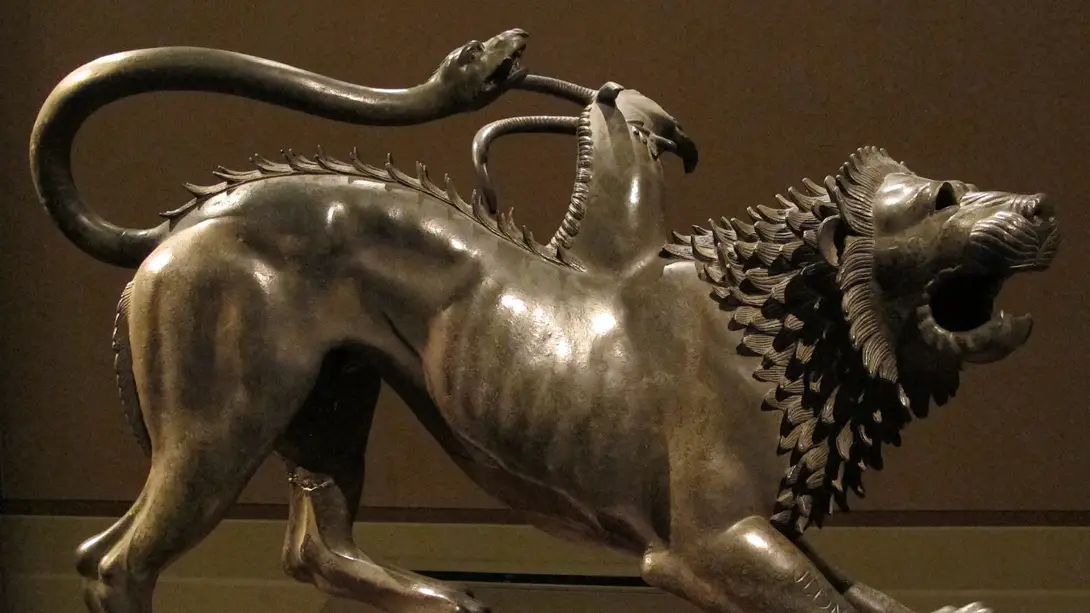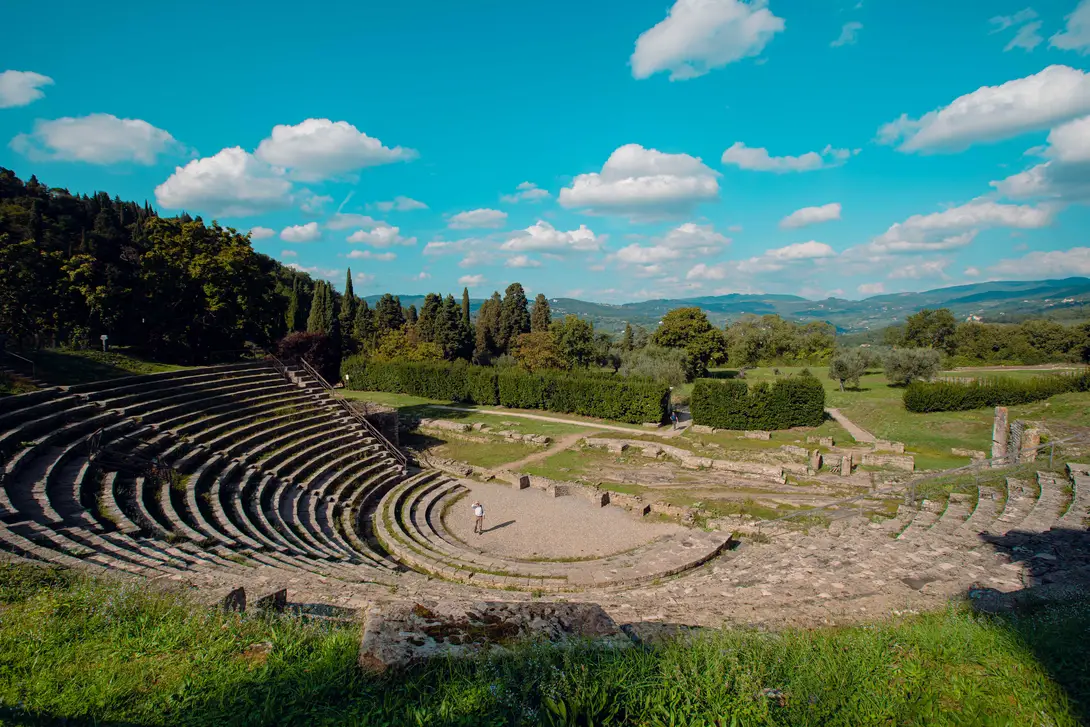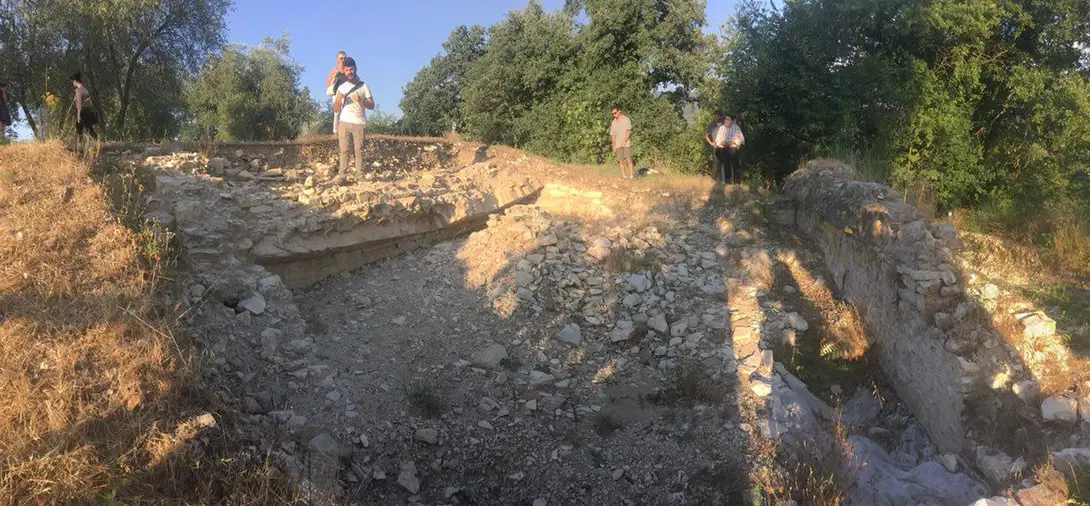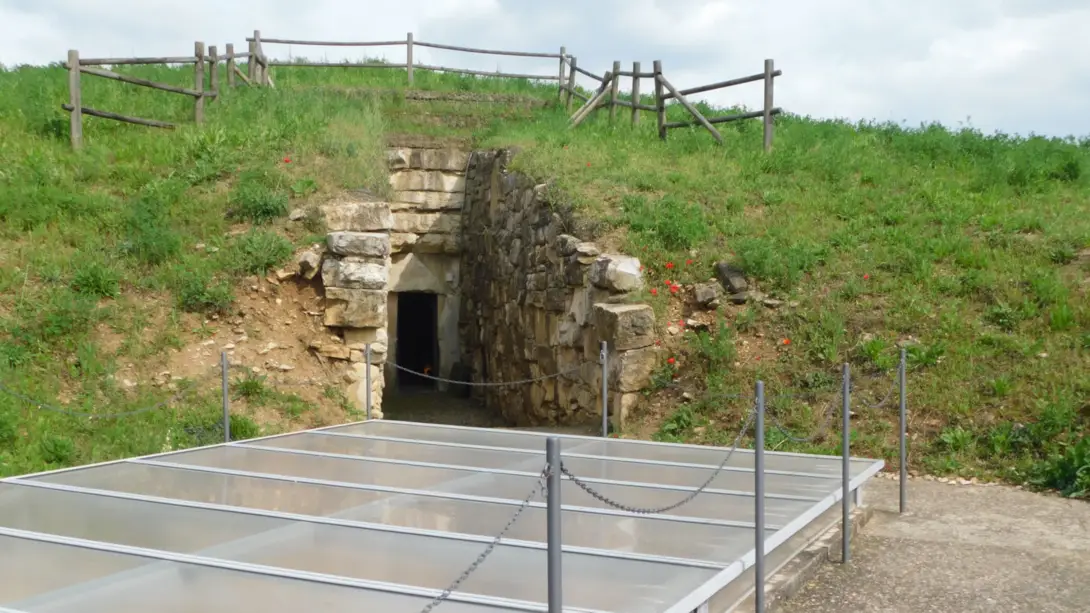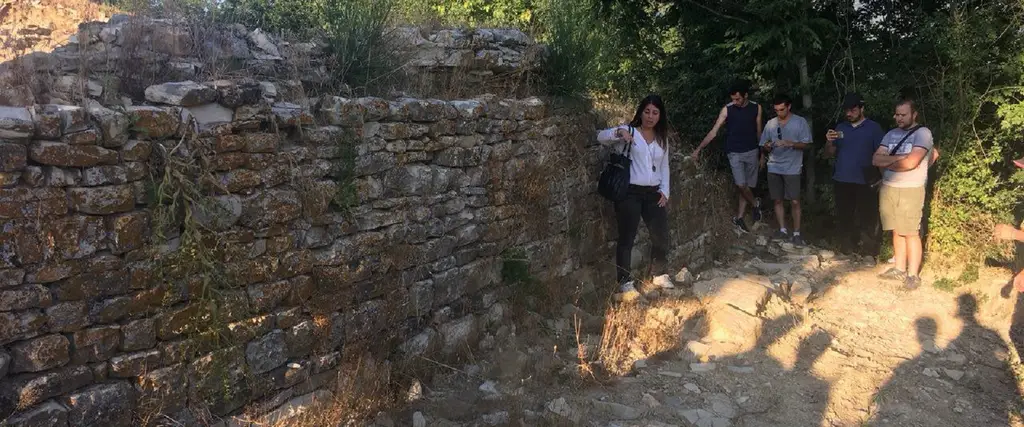
Short archaeological itinerary
Looking back and searching for traces of our past is an activity that works well when exploring our territory. Etruscans, Romans, Middle Ages: do you know the archaeological sites around Florence?
This short itinerary takes us by the hand to discover ancient civilisations, towards our ancestors who inhabited this land, tilled these fields, worked this stone, planted these trees..
Let's start in Florence, home to several important institutions such as the National Archaeological Museum and hidden archaeological sites, those that cannot be seen because they lie buried beneath the layers of the city that have been built up over the centuries. These include the medieval Cathedral of Santa Reparata, which can be visited in the crypt beneath the present Duomo, and the Roman Theatre, located directly beneath the imposing Palazzo Vecchio.
We move on to Fiesole, where Etruscan and Roman remains have been preserved in an admirable way and are on display in the Archaeological Area and Museum for all visitors, who are enchanted by this location.
We leave the city and head towards Valdarno, specifically to the municipality of Rignano sull'Arno, where the Castelluccio excavation site is located on the grounds of the Fattoria di Pagnana. It is a residential settlement, a small medieval castle.
As for the so-called Piana, or the area west of Florence, we find the majestic example of the Etruscan tholos tombs, in particular the Montagnola tomb in the municipality of Sesto Fiorentino.
Our short itinerary ends in Campi Bisenzio, at the Gonfienti Archaeological Museum in Rocca Strozzi, which displays artefacts from three different periods: the Bronze Age, the Etruscan period and the Roman period.
Comune di Rignano sull'Arno
The places
Stages
Archaeological Museum of Florence
The National Archaeological Museum, one of the most important, of this kind in Italy. houses masterpieces of the Etruscan, Greek-Roman and Egyptian art. It's inside the 17th century Palazzo della Crocetta, to which the Medici and Lorraine collections of antiquities were transferred from the Uffizi at the end of the 19th century.
The main core of works relates to theEtruscan civilization, including the large bronze statues of the Chimera and the Arringatore (Orator), plus an impressive selection of funerary sculptures (sarcophagi and urns), Greek pots and Attic ceramics, the highlight of which is the large black-figure crater known as the François Vase, which is decorated with mythological subjects.
The museum hosts a relevant collection of Etruscan andRoman bronzes, jewellery and ancients coins, some of which are unique worldwide. The collection of theEgyptian Museum, second in Italy only to the one in Turin, was put together mainly as a result of a French-Tuscan expedition to Egypt in 1828. It comprises materials ranging from the prehistoric period through to the early Christian era: vases, sculptures, sarcophagi with mummies, papyruses, amulets and small bronzesfrom various ages.
In the garden outside there are a number of reconstructed archaeological monuments. The garden is closed to the public.
The museum and its collections are suitable for very young visitors. Workshops and activities for family and children are occasionally organized in the museum’s rooms.
___________________________________________________________________
Attention, due to important renovation works, until the beginning of 2026 the entrance is from via della Colonna 38 (the ancient entrance).
Crypt of Santa Reparata (inside the Cathedral)
Inside the Cathedral steps lead down to the excavations that uncovered the ancient cathedral of Santa Reparata,evidence of the earliest Christianity in Florence, demolished after the new cathedral had been completed. Probably begun in the 6th century and then modified in the Romanesque age (addition of the crypt), the church remained in use while the new building was being erected.
Currently there are Roman and medieval finds, tombstones and fragments of the polychrome mosaic floor with geometric decorations. And it is here that the architect of the dome, Filippo Brunelleschi, is buried.
Palazzo Vecchio - Excavations of the Roman Theatre
The imposing Palazzo Vecchio was born on the ruins of the Roman Theatre of Florentia. Just a few steps downstairs and you find yourself back in ancient Rome!
The theatre could host 10 thousand people, with a diameter of about 100 meters; the cavea headed towards piazza Signoria, the scene towards via de’ Leoni. It was built immediately after the foundation of the colony named Florentia and then enlarged, at the beginning of the second century a.C., as the city significantly grew.
Unlike the anphitheatre located in Santa Croce district, this one was basically used to stage prose theatre until the 5th century. Then, it was subjected to spoliation and abandon and some of its spaces improperly used, such as the “Burelle” (radial corridors). In the 19th century part of the cavea came to light, but only thanks to the archaeological excavations, ended in 2010, was finally possible to open this site to the public.
Archaeological Museum and Archaeological area
The museum exhibits chart the ancient history of Fiesole and the surrounding area: human presence in the zone dates back at least as far as the Bronze Age (around 2000 BC), while the cityitself began to develop at the end of the 4th century BC. Fiesole was an important Etruscan settlement, occupying a strategic position controlling routes between southern Etruria and the Etruscan settlements in the Po area, and a bulwark against invasions from northern peoples, in particular the Gauls. It became a Roman colony in 80 BC, though it retained its Etruscan characteristics: in fact, the Romans chose to settle in the valley, founding Florence.
The museum is connected to the Archaeological Zone, comprising the excavations of a theatre, baths and an Etruscan-Roman temple. The museum also houses the Costantini Collection, consisting of ancient Greek vasesand a reconstructedLombard tomb. Also of note are various Etruscan bronzes, black- and red-figure Greek and Etruscan ceramics, and marble friezes from the Roman theatre.
Il Castelluccio - archaeological site
The archaeological area of Castelluccio occupies a small hill in the relief overlooking the Valdarno area of Rignano.
Given its proven nature as a sealed stratigraphic deposit, the presence of significant elevations and the availability of documentary sources represents a valuable historical and archaeological evidence of the birth, development, abandonment and repopulation of a fortified settlement which, in addition to being a significant nucleus of aggregation since the 11th century, played an important role during the central centuries of the late Middle Ages, as part of the conquests of the countryside made by Florence.
The importance of this castle, in a territory characterized by a scattered population, where the percentage of sites with remains of medieval settlements is very high, is given in particular by its strategic position to control the ford on the Arno and the ancient road network to reach the Florentine plain.
Etruscan Tomb of La Montagnola
Since centuries in Quinto, on the slopes of Monte Morello, there rises La Montagnola (the little mountain) - a mound of earth which due to its regular shape, had long suggested an artificial origin. In 1959, excavation works led to the discovery of an Etruscan tomb among the largest yet known.
The tomb dates back to the second half of the 7th century BC and is part of a series of archaeological sites - including the nearby tomb of La Mula - which testify to an ancient Etruscan presence in what today is the territory of Sesto Fiorentino.
It is a thòlos tomb made up almost entirely of large blocks of alberese limestone, and buried beneath an imposing mound of earth. Roughly circular at its base, the mound has a perimeter of about 125 meters, and a diameter of about 70 meters.
The interior of the tomb is accessed from the external dromos, an open-air corridor made of stone blocks. The corridor extends for 14 meters up to the entrance of the internal dromos, which continues inside for about 7 meters more.
Facing each other, two rectangular burial chambers open out from the middle of the internal dromos. By the entrance of one of these chambers, there is a large stone slab which feature - vaguely visible to the naked eye - traces of paintings depicting animals and ornamental motifs, along with some writings in the distinctive Etruscan alphabet.
The internal dromos leads to the entrance of the thòlos - a large circular burial chamber, with a diameter of about 5 meters and of equal height. This chamber is constituted by an ogival dome, made up of massive blocks of alberese limestone. At the centre of the thòlos lies a pillar made of tuff blocks, originally covered with clay and dark stucco; the pillar has no load-bearing function: it could have had, rather, an astronomical or religious function.
The tomb was found to have already been desecrated in the centuries before its discovery. In spite of this, archaeologists recovered a number of objects which, due to the quality of the materials and decorations, testify to the wealth and rank of the proprietary family. These objects are identified with the Orientalizing Etruscan period (spanning from the 7th to the 6th century BC), and are now preserved in the National Archeological Museum of Florence.
In 2001, during works of renovation, the foundations of a secondary tomb were discovered right before the entrance of the main tomb. Dating to the first half of the 7th century BC, and much more modest in size, this second tomb consisted of a single rectangular cell subdivided into two rooms.
Archaeological Museum of Gonfienti
Open since July 2022, the museum collects the archaeological remains that were found in the archaeological site of Gonfienti, between the municipalities of Prato and Campi Bisenzio and is located inside the Rocca Strozzi, that has been made available by the Municipality of Campi Bisenzio to the Superintendence of Archaeological Heritage of Tuscany.
The visitor route follows the three periods in which the site of Gonfienti was inhabited: the Bronze Age, the Etruscan period and the Roman one, with remains datable from the 16th century B.C. to the 4th century A.D.
The excavation campaigns have shown that Gonfienti was one of the largest settlements of Northern Italy, and it was inhabited continuously from the 16th to the 13th century B.C.; the numerous ceramic findings that were rediscovered testify to the daily activity of the village, especially for the production, preservation and consumption of food.
The vast Etruscan settlement, founded between the 6th and 5th, was organised according to a regular urban model; standing out among the various sectors that have been explored to date is the large residential building of Lot 14, that is developed on a rectangular plan of over 14000 sqm; the roof of this building, with tiles and antefixes of fine workmanship, has been reconstructed.
Even the Roman settlement has given us traces of a large building of imperial Roman times, with a series of rooms overlooking a central courtyard; on display is a portion of the "Tabula Peutingeriana" from this era, the ancient Roman map that shows the road system in the territories of the Empire.
